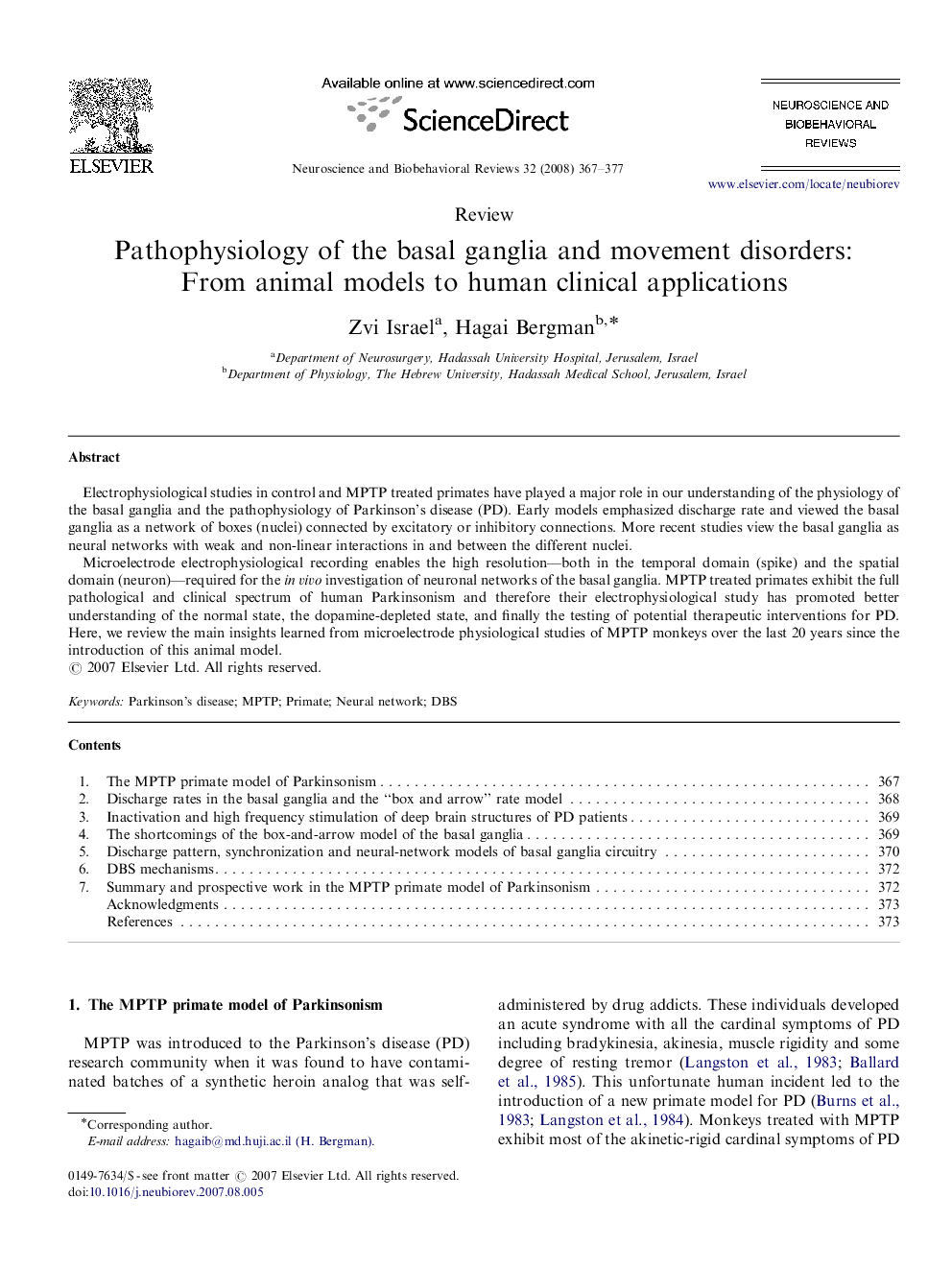| کد مقاله | کد نشریه | سال انتشار | مقاله انگلیسی | نسخه تمام متن |
|---|---|---|---|---|
| 938040 | 924574 | 2008 | 11 صفحه PDF | دانلود رایگان |

Electrophysiological studies in control and MPTP treated primates have played a major role in our understanding of the physiology of the basal ganglia and the pathophysiology of Parkinson's disease (PD). Early models emphasized discharge rate and viewed the basal ganglia as a network of boxes (nuclei) connected by excitatory or inhibitory connections. More recent studies view the basal ganglia as neural networks with weak and non-linear interactions in and between the different nuclei.Microelectrode electrophysiological recording enables the high resolution—both in the temporal domain (spike) and the spatial domain (neuron)—required for the in vivo investigation of neuronal networks of the basal ganglia. MPTP treated primates exhibit the full pathological and clinical spectrum of human Parkinsonism and therefore their electrophysiological study has promoted better understanding of the normal state, the dopamine-depleted state, and finally the testing of potential therapeutic interventions for PD. Here, we review the main insights learned from microelectrode physiological studies of MPTP monkeys over the last 20 years since the introduction of this animal model.
Journal: Neuroscience & Biobehavioral Reviews - Volume 32, Issue 3, 2008, Pages 367–377